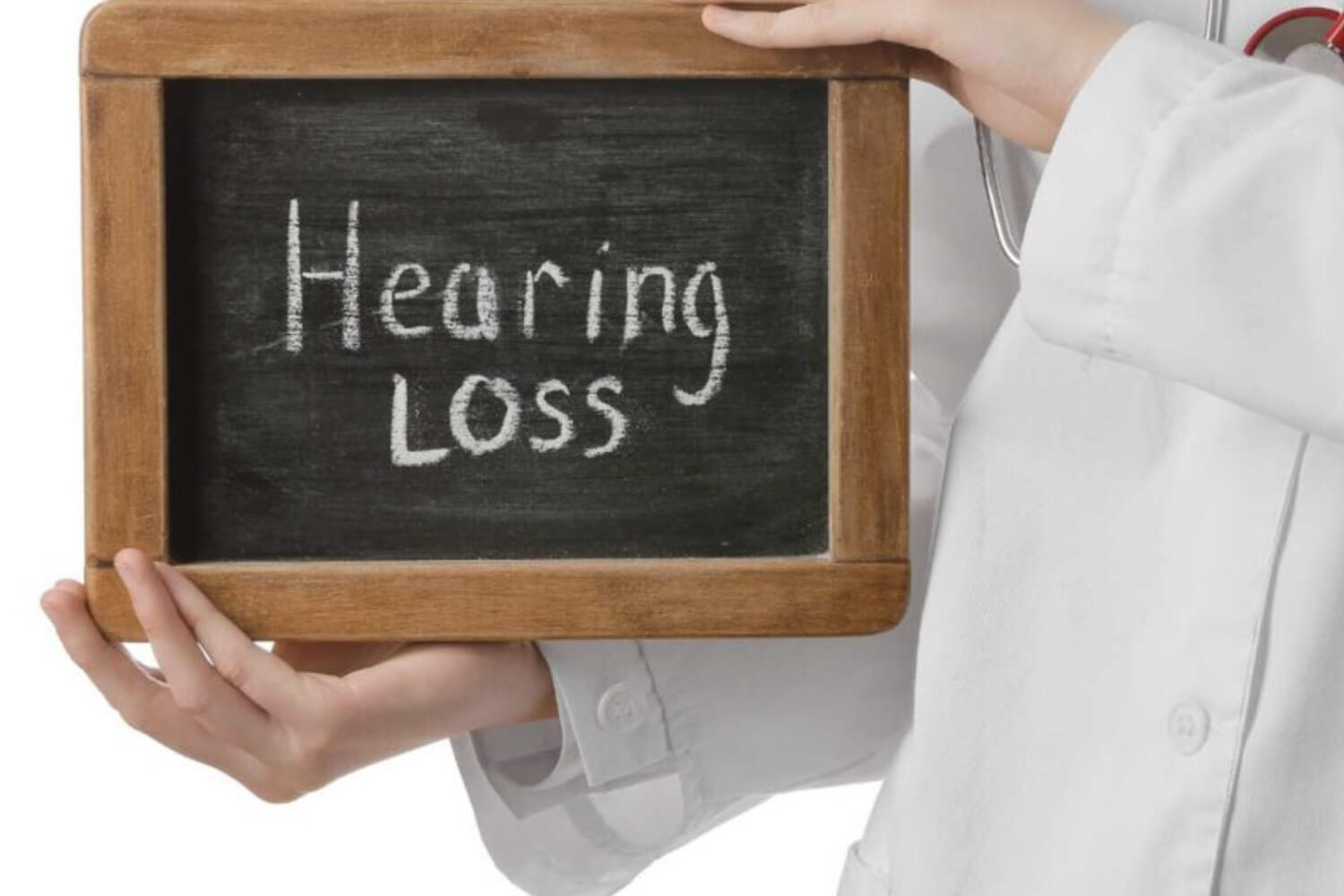Hearing loss is the loss of hearing in one or both ears, ranging in degree from mild, moderate, severe to profound. Hearing loss is very common, as it’s the third most common physical condition after arthritis and heart disease. Presbycusis, or age-related hearing loss, comes on gradually as a person gets older and often goes unnoticed given its gradual onset.
Parts of the Ear
There are a lot of questions about the different types of hearing loss. But before I describe those types, I think it’s important to understand the anatomy of the ear. Those parts consist of the outer, middle, and inner ear.
- The outer ear consists of the external ear and external auditory canal. The tympanic membrane, or eardrum divides the outer ear from the middle ear.
- The middle ear consists of the middle ear ossicles or bones. They are called the malleus, incus, and stapes, but you may know them as the hammer, anvil, and stirrup. Fun fact: These bones are the smallest bones in the body! The middle ear space also contains the eustachian tube opening. This connects the middle ear space with the nasopharynx area (think: in the way back of your throat.). The purpose of the eustachian tube is to equalize pressure in front and behind the eardrum. The eustachian tube is usually closed, but when we swallow or yawn, you can feel it open.
- The inner ear contains the cochlea (responsible for hearing) and the vestibular system (responsible for balance). The cochlea is shaped like a snail and is lined with hair cells. Each hair cell responds to different sound frequencies, with high frequencies located at its base and low frequencies towards the top.
So…a sound is directed into your external auditory canal by the external ear. That sound sets the eardrum into motion, which sets the middle ear bones into motion as well. The stapes push into the oval window of the fluid-filled cochlea, which stimulates the appropriate hair cells. There is a lot more that happens, but for this topic, we’ll stop there.
Types of Hearing Loss
With all these moving parts, what could go wrong? Oh boy, you had to ask!
Conductive hearing loss when something in the outer or middle ear stands in the way of the sound getting to the cochlea, it’s considered a conductive hearing loss. What would get in the way?
- Ear wax
- Perforated eardrum
- Fluid in the middle ear
- Eustachian tube not equalizing pressure
- Swimmer’s ear
- Disarticulation of the ossicles (think broken ear bones)
- Otosclerosis (when overgrowth on the bones prevents them from moving)
- Sensorineural hearing loss… when there are hair cells missing or damaged. This is the most common kind of hearing loss.
Typical causes are
- Aging
- Noise exposure
- Some medications
- Virus
- Illness
- Infection
- Genetics
Treatment for sensorineural hearing loss, depending on the severity, will involve hearing aids or cochlear implants.
- Mixed hearing loss is a hearing loss that which both conductive and sensorineural losses are present. Perhaps a person with a noise exposure history develops a swimmer’s ear? An older adult diagnosed with sensorineural hearing loss may also have ear wax issues
- Sudden sensorineural hearing loss is an unexplained, sudden hearing loss either all at once or over a few days. This frequently affects only one ear. Often, people wake up in the morning and notice hearing loss. Some will hear a loud ‘pop’ before the hearing goes away. The ear may feel full and experience some dizziness.
- Sudden sensorineural hearing loss is an unexplained, sudden hearing loss either all at once or over a few days. This frequently affects only one ear. Often, people wake up in the morning and notice hearing loss. Some will hear a loud ‘pop’ before the hearing goes away. The ear may feel full and experience some dizziness and/or tinnitus (ringing). While some patients will spontaneously recover some of their hearing,
- Configuration describes the shape of hearing loss. Some examples are ‘flat’, where there is the same amount of hearing loss in each of the frequencies, or ‘sloping’, where there is more hearing loss in the high frequencies than the low frequencies.
- Symmetry compares hearing loss in each ear. If they are similar, it is considered ‘symmetric’. If not, ‘asymmetric’.
Hearing loss can also be described as:
Hearing Loss can also be described as:
- Unilateral or Bilateral…is the hearing loss in one ear or both?
- Pre-lingual or Post-lingual…did the hearing loss occur before the person developed language or after?
- Progressive or Sudden…was the change to your hearing a gradual change, or a sudden change?
- Fluctuating or stable…does your hearing seen the same from day to day, or do you notice changes, up or down?
- Congenital or Acquired/Delayed Onset…was the hearing loss present at birth or did it occur after?
Importance of Getting a Hearing Test
Untreated hearing loss can impact your health as well as your well-being. Research indicates that people with hearing loss have higher rates of depression, social isolation, and cognitive decline. A hearing test doesn’t just discover hearing loss; it can uncover many physical and medical issues that you may not have known about (and which may not present any symptoms).
If you are experiencing any of these situations, such as:
- Difficulty understanding everyday conversations
- A feeling of being able to hear but not understand
- Having to turn up the TV or radio
- Asking others to repeat themselves often
- Avoidance of social situations that were once enjoyable
- Fatigue after a day of listening to other people
- Increased difficulty communicating in noisy situations like restaurants, social gatherings, in the car, or in group meetings
- Tinnitus, or ringing and/or buzzing sounds in the ears
By understanding and being familiar with the different types of hearing loss, you and our audiologist can come up with a personalized treatment plan to address your hearing needs.


